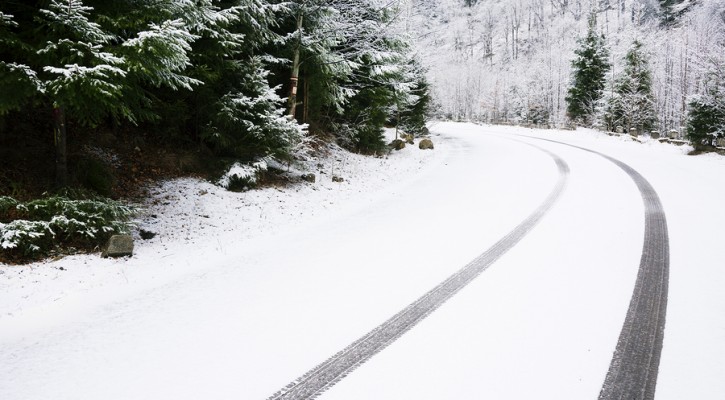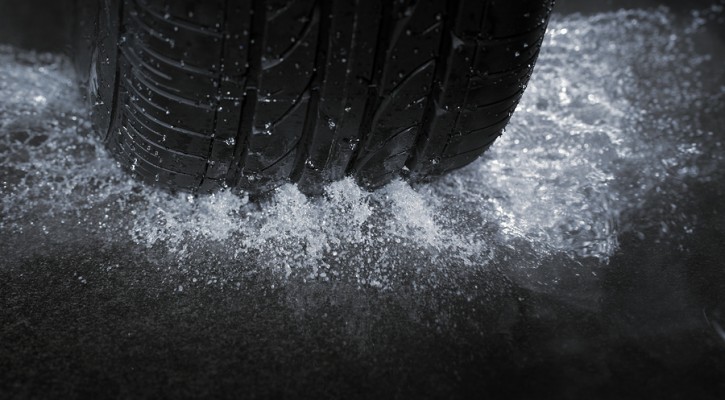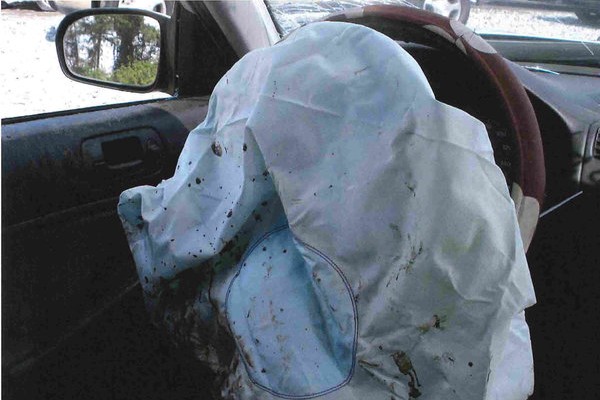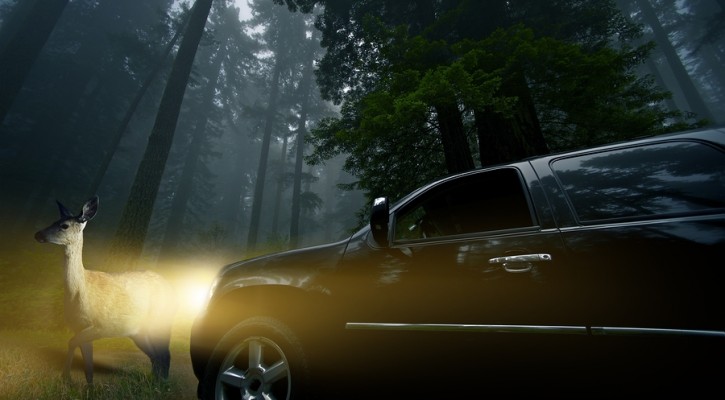
First Snow Of The Year
October 31, 2014
Oddly enough, the first snow of the year is forecast for this Halloween weekend throughout the mountain areas of the Southeastern US. Weather forecasts call for the possibility of as much as eight to twelve inches in the higher elevations along the Tennessee/North Carolina border and one to three inches in Asheville NC.
Forecasters call for rain in these regions that will turn to snow as the temperatures start to fall. Hopefully, these areas won’t experience the crippling driving conditions that Atlanta experienced last January.
You may remember the headlines from earlier this year when hundreds of thousands of drivers in Atlanta were released from work and hit the road at the same time. Many never made it home and vehicles were left abandoned on Atlanta roads for days afterwards. A lot of people up north gave Atlanta residents a hard time for their inability to deal with what seemed to be only a couple of inches of snow but they didn’t get the whole picture.
That morning in Atlanta, as the snow began to fall, the roadways were still relatively warm causing the snow to melt as it hit the roadways. As temperatures started to plunge, that layer of melted snow turned to a sheet of ice that was later covered with a layer of snow. It was the solid sheet of ice that caused the problems, not the snow!
After Denver and Phoenix, Atlanta, located in the foothills of the Appalachian Mountains at over 1,000 feet, is the third highest major city in the US. Metro Atlanta’s topography consists of high hills and deep ravines and, when any one of Metro Atlanta’s 5.5 million residents pull out of their driveway, they will be headed either up or downhill.
It wasn’t the snow that caused the problems in Atlanta but hundreds of thousands of vehicles trying to make it up and down those high, ice coated hills. It was a nightmare that few cities in a similar situation would be able to cope with.
Drivers who aren’t used to driving in snow need to use extreme caution if they attempt to go out in the snow this weekend. Most driver manuals in states that have a lot of snow and ice offer these driving rules for coping with wintry driving conditions. When driving on:
- Wet roads: Slow down 5 to 10 mph.
- Packed snow: Slow down to half speed.
- Ice: Slow to a crawl.
In addition to watching your speed, you should at least double the following distance between you and the vehicle ahead.
Know what type of brakes you have. If you have standard brakes, don’t slam on your brakes when driving on snow or ice; instead, lightly pump your brakes to slow the vehicle. If you have anti-lock brakes, apply firm pressure to the brake pedal.
If you start to skid, turn your wheel in the direction of the skid and don’t concentrate on looking at the hazards to the sides. Keep your eyes on where you want the vehicle to go and make steering adjustments to steer in that direction.
Be aware that snow tires don’t work well on ice.
This is a perfect training opportunity for your teen driver but you should limit their driving to no further than the end of the street at very low speeds. It should be quite an eye opening experience for your teen. Be prepared however for the possibility that your teen may take out a mailbox or two. It’s far better for your teen to learn under controlled conditions like this than to experience it for the first time on their own after they get their operator’s license.

Ask The Traffic School Instructor: Hydroplaning
October 22, 2014
Question: Is there a difference between hydroplaning and skidding?
Answer: While the end result may be the same, the causes of skidding and hydroplaning are different.
Skidding
Skidding is caused by a slick road surface. Your greatest chances for skidding happen when it rains and the most dangerous time is within the first half-hour after it starts to rain. During dry periods, oil and other fluids drip and build up on the roadway. When it starts to rain and there’s a coating of water on the road, all of that oil rises up on top of the water creating a very slick surface. When you hit the brakes, the slick surface may not allow the tires to grip the road. After a heavy rain, all of the oil will be washed off the road.
Other surfaces that can cause skidding are gravel or dirt roads. On those surfaces, the tires aren’t on a flat, even surface. If you can imagine the tire’s surface resting on the small tips of a bunch of rocks rather than having full contact with a flat surface; the tires just don’t have enough grip and that makes it is easier to skid.
It’s important to know what kind of brakes you have on your car. If you have standard brakes, don’t hit the brakes when you start to skid. That can make matters worse. Just take your foot off the gas and concentrate on steering until you pass over the slick spot. If you have anti-lock brakes, they’re made to control your vehicle while skidding by rapidly applying and releasing the brakes multiple times per second. When applying anti-lock brakes, you may feel some fluttering in the brake pedal but that’s normal. Just keep an even pressure on the brakes to stop.
Hydroplaning
Hydroplaning is caused by standing water on the road. As the tires travel through the water, the water is too deep for the tire’s tread to squeeze out all the water and the tires can actually ride up on top of the of the water surface like water skis. At that point, your tires are no longer in contact with the road surface and you’re just along for the ride.
Hydroplaning can happen at speeds as low as 35 mph but it’s most dangerous at speeds above 55 mph. The best way to avoid hydroplaning is to avoid areas of standing water and, if you can’t avoid it, slow down before you enter the water.
If you’re hydroplaning, your tires are no longer in contact with the road. Don’t slam on the brakes! Take your foot off the gas and concentrate on trying to steer until your tires are back in contact with the road.

Airbags In Hot, Humid Climates Can Explode
October 21, 2014
Airbags that can explode, sending out flames and hot shrapnel have prompted an urgent recall for millions of vehicle owners. The National Highway Transportation Safety Administration (NHTSA) issued a recall on October 20, 2014 for owners of Toyota, Honda, Mazda, BMW, Nissan, and General Motors. The airbags were manufactured by the Takata corporation of Japan and have been installed in millions of vehicles going back to the 2002 model year.
According to reports, the airbags may be more prone to explode in hot, humid areas so the NHTSA warning is more urgent for those living in the following areas: Florida, Puerto Rico, Guam, Saipan, American Samoa, Virgin Islands and Hawaii. NHTSA advises owners living in those areas to have the vehicle repaired without delay.
While the press release only mentions an urgent warning for those living in the areas listed above, vehicle owners throughout the Southeast and Gulf Coast regions should get their vehicles checked without delay.
Toyota issued a warning that, until the problem is fixed, passengers should not ride in the front passenger seat. They went further to advise that owners turn off the passenger side airbags.
For more information and a list of the recalled vehicles you can visit: Affected Vehicles, by Manufacturer, Impacted by CY 2013 and 2014 Recalls Involving Takata Airbags
If you are still uncertain, you can see if your specific vehicle has been recalled by entering the Vehicle Identification Number (VIN) by visiting: Search for recall by VIN.
To find your vehicle’s VIN, look at the inspection plate just under the windshield or on the driver’s side front door panel.
Right now, the VIN lookup website is experiencing a high volume of traffic so, if you can’t get in, you may want to call your vehicle’s local dealership for more information.
For more information see: Feds Urge Millions of Car Owners to Get Air Bags Fixed Now

Deer On The Roads
October 21, 2014
It almost happened to me this past weekend. I was driving just after dark when, at the last second, I caught a glimpse of a deer about to cross the road. I hit my brakes, honked the horn and, luckily, she changed direction and ran back into the woods. I hate to think of what would have happened if I had hit her at 40 mph.
Wildlife experts say most crashes between deer (including moose and elk) and cars happen between October and the end of the year. There are a couple of reasons for this. Farmers have harvested their crops so the source of food and cover for deer are now gone and they’re looking for new feeding grounds.
It’s also mating season so the stags will be out in search of mates and gathering a harem. If you see one deer, chances are there will be more close by. They’ll be most active between sunset and dawn.
As you drive after dark, especially in rural areas, keep a watchful eye on the sides of the roads. Deer blend in with their surroundings so, sometimes, the only thing you may see will be the reflection of their eyes in your headlights. Be prepared to slow and honk your horn. You also need to be aware of other traffic on the road if you have to hit the brakes.
Sometimes the only choices you will have if a deer crosses in front of you will be bad ones. Swerving to avoid hitting the deer could send your car out of control. Hitting an animal that large is going to do a significant amount of damage to your vehicle but, sometimes, that’s the safer choice.
If you see the deer early enough, slow, honk your horn and be aware that there will probably be more nearby.

Passengers Can Be More Helpful Than Distracting
October 17, 2014
As a driving school instructor, while discussing driver distractions, I’ve often been asked “What’s the difference between talking on a cell phone and talking with a passenger?” My answer has always been that the person on the cell phone can’t say “Watch out for that car up ahead!” Also, unlike the person on the other end of the cell phone, the passenger can stop talking when he or she recognizes that the driver is facing a difficult driving situation. Now the scientific evidence is in proving that my answer was correct.
Researchers at the University of Illinois observed drivers while negotiating through different driving situations such as merging and encountering unpredictable drivers on a simulated course.
They observed the drivers under four different scenarios:
- Driver alone,
- Driver speaking to a passenger,
- Driver speaking to someone on a hands-free mobile device,
- Driver speaking to someone who could see the driver and observe the driving scene via hands-free videophone.
The research showed that (no surprise) driving alone was safest because it allowed the driver to operate without any distractions. However, when driving with passengers who could observe the driving environment, especially one who had driving experience of their own, they found the passengers could be quite helpful. Just as in my answer to my students, they found that the passenger could help in navigating, moderate their conversation when driving was difficult, and warn of hazards ahead.
Again, no surprises here, they found that drivers talking on a cell phone were more likely to be involved in a crash.
The big surprise to the researchers was the results of drivers talking to someone outside the car on a video relay where the other person could see both the driver and the driving scene. In those situations, the outside person acted similarly to passengers inside the car as far as picking up on the driving hazards ahead and moderating their conversation.
Read more:Travelling with a passenger makes you a SAFER driver – but only if they are aware of road conditions
